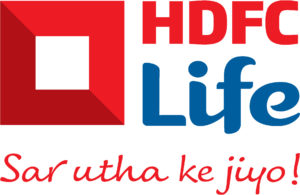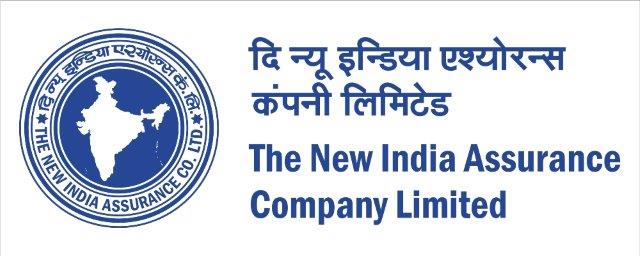“The goal of the non-professional should not be to pick winners – neither he nor his “helpers” can do that – but should rather be to own a cross-section of businesses that in aggregate are bound to do well. A low-cost S&P 500 index fund will achieve this goal.” — Warren Buffett, 2013 Letter to Berkshire Hathaway shareholders
As Albert Einstein wisely stated, compound interest is the eighth wonder of the world: He who understands it earns it while he who doesn’t pay it. The vast majority of individuals who take the initiative to accumulate savings should follow Warren Buffett’s advice on using index funds and dollar cost averaging to achieve satisfactory returns over time. For those earning at or above the median wage in the United States, it would be very difficult to end up poor if one simply saves ten to fifteen percent of gross income and dollar cost averages into the S&P 500 over several decades.
But what about non-professional individual investors who want to achieve better than average results? In the short run, the stock market resembles a manic-depressive character who bids up prices one day and sends them down the following day without much of a reason for the change in sentiment. Benjamin Graham’s “Mr. Market” character perfectly personifies the psychology of financial markets in the short run.
Continue Reading →
We talk a lot about how machines are being used more and more in finance. This is especially important in High-Frequency Trading (HFT) and Algorithmic Trading or algo-trading (AT). There is simply no way for humans to compete on these levels, as a few milliseconds means the difference between making money and losing it. These timescales are shorter than it takes to speak a whole word, and hence it is no place for screaming brokers.
Well, there isn’t really a place for screaming brokers anymore, because not only do computers dominate the super short trading scene, they appeared in the human-directed trading scene long before. Let’s look at a very brief history of the shift from brokers to computers, then let’s look at the consequences. Some are nice, some not so nice.
You can track HFT, AT, and AI on our personalised news platform, CityFALCON, here.
History of the Shift
Once upon a time, brokers crowded the NYSE floor to make trades with hand signals and loud calling. They also used phones to speak to each other and buy and sell. What an antiquated idea, no?
Continue Reading →
Today I want to talk about a topic that could turn a lot of losing traders into profitable and professional traders. In our pro forum, I keep coming back to this topic quite often because I know about the importance and in the pro area, we have now seen many times that traders who follow this way of thinking, have a better chance of becoming profitable.
Learning vs. making money
I completely understand that this will be a tough pill to swallow but I always think that being honest and having realistic expectations is a key to trading success.
In trading, there is a time to make money and there is a time to study and work on yourself. When you are just starting out, you should not focus on making money and you have to completely detach yourself from the belief that you’ll earn a great living anytime soon.
Continue Reading →

Knowledge has to be improved, challenged, and increased constantly, or it vanishes – Peter Drucker
We couldn’t agree more, especially in the business of stock trading; the more you learn, the more you earn.
As such, much of the knowledge we share on this blog focuses on recapping technical chart patterns of past stock and ETF trades that led to successful, profitable outcomes.
However, equally priceless lessons can be learned by walking through losing trades that did not work as expected.
In this article, we share three insightful, psychological tips (or reminders for experienced traders) from our recent losing swing trade in $SQQQ.
Grab your notebook and continue reading to improve your success as an equities trader…
Continue Reading →
 IPO Snapshot:
IPO Snapshot:
HDFC Standard Life Insurance is entering the primary market on Tuesday 7thNovember 2017, with an offer for sale (OFS) of up to 29.98 crore equity shares of Rs. 10 each, by both the promoters HDFC (64% of OFS) and Standard Life (36% of OFS), in the price band of Rs. 275 to Rs. 290 per share. Representing 14.92% of the post issue paid-up capital, OFS will raise Rs. 8,695 crore at the upper price band and will close on Thursday 9th November. Listing is likely on 17th November.
Company Overview:
HDFC Standard Life, HDFC’s 61.21% subsidiary, with 34.75% owned by foreign partner Standard Life, is India’s 3rd largest private sector life insurer, after ICICI Pru and SBI Life, based on market share of 16.5% among private insurers, on FY17 total premium.
Continue Reading →
Good traders are known to be masters of risk management. Risk management includes following a detailed trading plan, setting stop and limit orders and managing traders without succumbing to emotions.
Good traders also tend to follow a robust trading plan that focuses more on ensuring that the traders do not lose their capital, while the profits are seen as only secondary. As part of this pursuit in achieving trading excellence, professional and seasoned traders follow the concept of setting limits on their losses, on a daily, weekly and even monthly basis.
Trading with limits ensures that the traders do not end up sabotaging themselves in the heat of the moment as emotions can often override logic when a trade turns into a loss.
Continue Reading →
 IPO Snapshot:
IPO Snapshot:
Khadim India is entering the primary market on Thursday 2nd November 2017 to raise Rs. 50 crore via fresh issue of equity shares and an offer for sale (OFS) of up to 66 lakh equity shares of Rs. 10 each by promoters (11% of OFS) and Fairwinds PE (89% of OFS), both in the price band of Rs.745 to Rs. 750 per share. Representing 40.32% of the post issue paid-up share capital at the upper end, total issue size is Rs. 543 crore. The issue will close on Monday 6th November and listing is expected on 14thNovember.
Company Overview:
Khadim India is India’s second largest footwear retailer, and the largest in East India, with 853 Khadim’s branded retail outlets (80% of which are franchised out) and 377 distributors, as of 30-6-17, with retail accounting for 73% of Rs. 621 crore FY17 topline and distributors accounting for 22%. The company has a dual strategy to grow both retail outlets and deepen distribution pipeline. The company offers a bouquet of 9 brands across different footwear categories, besides parent brand Khadim. Positioned as a value retailer focusing on mass and mass premium category, 55% of its stores are located in tier 3 cities.
Continue Reading →

IPO Snapshot:
The New India Assurance Company is entering the primary market on Wednesday 1st November 2017 with an IPO of up to 12 crore equity shares of Rs. 5 each, comprising fresh issue of upto 2.40 crore equity shares and an offer for sale (OFS) of 9.60 crore equity shares by promoter Indian Government, both in the price band of Rs.770 to Rs. 800 per share, with Rs. 30 per share discount for retail investors. Representing 14.56% of the post issue paid-up share capital, issue will raise Rs. 9,474 crore, at the upper end, of which, Rs. 1,895 crore will flow into the company via fresh issue and balance Rs. 7,579 crore will meet FY18 divestment target of Rs. 72,500 crore. Issue will close on Friday 3rd November and listing is expected on 13thNovember.
Company Overview:
New India Assurance, 99.99% subsidiary of Government of India, is the country’s largest general insurance company, with 15% market share (down from FY16’s 15.7%) in gross direct premium, enjoying leadership in all segments, such as motor, health, fire, marine, except crop. In FY17, motor, health, fire, marine, crop segments accounted for 39%, 26%, 15%, 3% and 5% of company’s gross written premium, respectively, which is more-or-less in line with the industry structure, except for crop insurance where all private sector insurers have been more aggressive. Company has a robust pan India multi-channel distribution network, comprising 2,452 offices, 68,389 agents, 16 corporate agents, 25 bancassurance partners (including Bank of India and Canara Bank), with individual agents, direct sales and brokers accounting for 42%, 31% and 26% of business respectively.
Continue Reading →

Mahindra Logistics Ltd. (MLL) – a Mahindra group company is one of India’s largest 3PL solutions providers in the Indian logistics industry which was estimated at Rs. 6.40 trillion in fiscal 2017 according to CRISIL report. MLL’s competitive advantage is its “asset-light” business model pursuant to which assets necessary for operations such as vehicles and warehouses are owned or provided by a large network of business partners. Technology enabled, “asset-light” business model allows for scalability of services as well as the flexibility to develop and offer customized logistics solutions across a diverse set of industries. The company operates in two distinct business segments, supply chain management (“SCM”) and corporate people transport solutions (“PTS”).
Continue Reading →

George Soros, founder of Soros Fund Management LLC
Traders tend to be overconfident and discount what they don’t know about the market and individual securities. They see patterns instead of random noise. And they have a hard time admitting their losses and focus too much on gains.
In summarizing the science of behavioral finance, Statman says we’re pretty much hard-wired to consistently make these mistakes — and lose money. Since we tend to think of ourselves as better than average on most everything from driving to investing, it clouds our rational judgment. A body of research has found this to be particularly true when it comes to amateur stock traders.
Statman said that average returns of frequent traders “lag those of infrequent traders and the average returns of infrequent traders lag average returns of investors who abstain from trading.”
Continue Reading →







 IPO Snapshot:
IPO Snapshot:
 IPO Snapshot:
IPO Snapshot:

